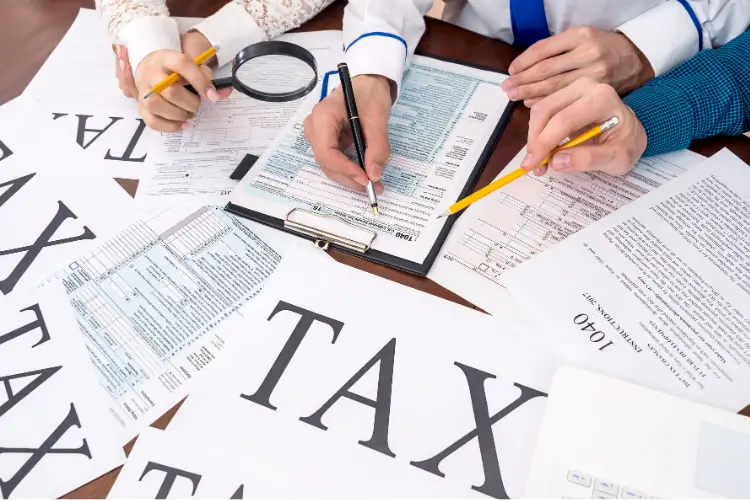For those who are both landlords and residents of their property, understanding tax deductions can be valuable in reducing taxable income. As a live-in landlord, you may be able to claim a range of deductions, but knowing what applies to your situation and understanding the regulations are key.
What is a Live-In Landlord?
Being a live-in landlord means you rent out part of your primary residence while still residing there yourself. Often, these landlords rent out a room or a separate part of their home to a tenant. This arrangement can be beneficial for both financial and practical reasons, but it also requires careful navigation of tax policies. Let’s break down what deductions are possible for live-in landlords and how to ensure compliance with tax laws.
Who Qualifies as a Live-In Landlord?
To qualify as a live-in landlord, you generally need to own the property, live in it as your main residence, and rent out part of it for an income. Whether you rent a room or a section of your property, this arrangement can open doors to several tax deductions that can help lower your tax burden.
Tax Deductions Available to Live-In Landlords
As a live-in landlord, you can claim various deductions on expenses that are directly associated with renting out part of your home. However, these deductions are limited to the proportion of the property used for rental purposes. Here’s an overview of common deductions:
1. Mortgage Interest
If you have a mortgage on your property, a portion of the interest you pay may be deductible. The deduction applies to the part of the mortgage interest that corresponds to the rented space. For instance, if you rent out one room in a four-room house, you may be able to deduct 25% of your mortgage interest.
Calculating Mortgage Interest for Your Rental Space
To determine the deduction, calculate the percentage of your property that’s rented and apply it to your total mortgage interest. Be prepared to keep detailed records of this calculation, as it’s essential to provide accurate information if requested.
2. Property Repairs and Maintenance
Property repairs directly related to the rented area may also be tax-deductible. Common repairs, like fixing a leaking sink in a rented bathroom, can be partially deducted. Maintenance expenses that benefit the entire home (such as roof repairs) might only be partially deductible, depending on the rental portion.
Distinguishing Between Repairs and Improvements
It’s important to differentiate repairs from improvements. While repairs are immediately deductible, improvements—such as adding new amenities—are often considered capital expenditures and may need to be depreciated over time.
3. Utilities
Since many live-in landlords share utilities with their tenants, a portion of utilities like electricity, gas, and water can be deducted. The deductible amount is based on the rental area and how much the tenant uses. Accurate documentation of these expenses will make this deduction process easier.
Calculating Utility Deductions
Estimate utility use fairly by dividing costs between personal and rental use. For instance, if you have a shared utility bill and a tenant occupies 20% of your home, you can allocate 20% of the bill for deduction.
4. Depreciation
These same principles apply to dedicated investment properties, offering significant tax advantages. Understanding how to properly claim these deductions is crucial for maximizing returns on your real estate portfolio. For instance, depreciation on Australian investment property can significantly reduce your taxable income each year. This involves assessing the wear and tear on the building structure and eligible fixtures, allowing investors to recover a portion of their asset’s cost over its useful life. Proper documentation and expert advice are key to unlocking these valuable tax benefits.
Claiming Depreciation on Your Rental Property
To calculate this, use the percentage of your property dedicated to rental, applying it to the value of assets eligible for depreciation. Note that land does not depreciate, so only the structure and furnishings qualify. Additionally, this procedure could feel overwhelming. You can always take the help of a professional who can prepare a depreciation schedule for you, so that you can plan a tax strategy and cash flow with more confidence. They can also provide the documentation your accountant can use when lodging claims or responding to queries.
5. Home Insurance
A portion of your home insurance premiums may also be deductible. The deduction applies to the amount of the policy cost that correlates with the rented space. If you have special landlord insurance, this may be fully deductible.
Key Considerations for Live-In Landlord Tax Deductions
Being eligible for deductions is beneficial, but there are a few considerations to keep in mind to ensure compliance and maximize your deductions:
Keeping Detailed Records
Accurate records of all expenses and calculations are essential for live-in landlords. Documentation like receipts, utility bills, and mortgage statements helps validate your deductions and prepares you for any potential inquiries from tax authorities.
Understanding Proportional Deductions
Since deductions are proportionate to the rented area, it’s crucial to know the exact percentage of your property being rented out. This could be based on square footage or a room-to-room basis, depending on how you choose to calculate it.
Staying Informed on Tax Regulations
Tax regulations change periodically, and what might have been deductible last year could change. Staying updated or consulting a tax professional helps you adapt to any adjustments in tax laws related to rental deductions.
Possible Benefits of Tax Deductions for Live-In Landlords
Reducing Taxable Income
One of the main benefits of tax deductions for live-in landlords is the ability to reduce taxable income. By claiming legitimate deductions, live-in landlords can lower their overall tax burden, making it more affordable to manage a rental setup.
Increased Cash Flow
Deductions can improve cash flow, allowing live-in landlords to reinvest in property upkeep or save for other financial goals. This increased cash flow can be especially helpful in covering property expenses and maintaining the rental space.
Long-Term Property Value Enhancement
By keeping the property in good shape and regularly investing in repairs or improvements, landlords can enhance the long-term value of their home. Deductions allow landlords to maintain their property while benefiting from financial relief, which may boost its appeal in the future.
Navigating tax deductions as a live-in landlord can be complex but rewarding. By understanding the range of deductible expenses and maintaining meticulous records, landlords can significantly reduce their tax burden. Remember that seeking professional guidance can help ensure compliance with current tax laws, allowing live-in landlords to benefit fully from their unique housing setup.
Live-in landlord tax deductions are a practical way to manage the financial side of sharing your home, turning a rental arrangement into a financially sound strategy for maximizing property use while enjoying the tax benefits.




